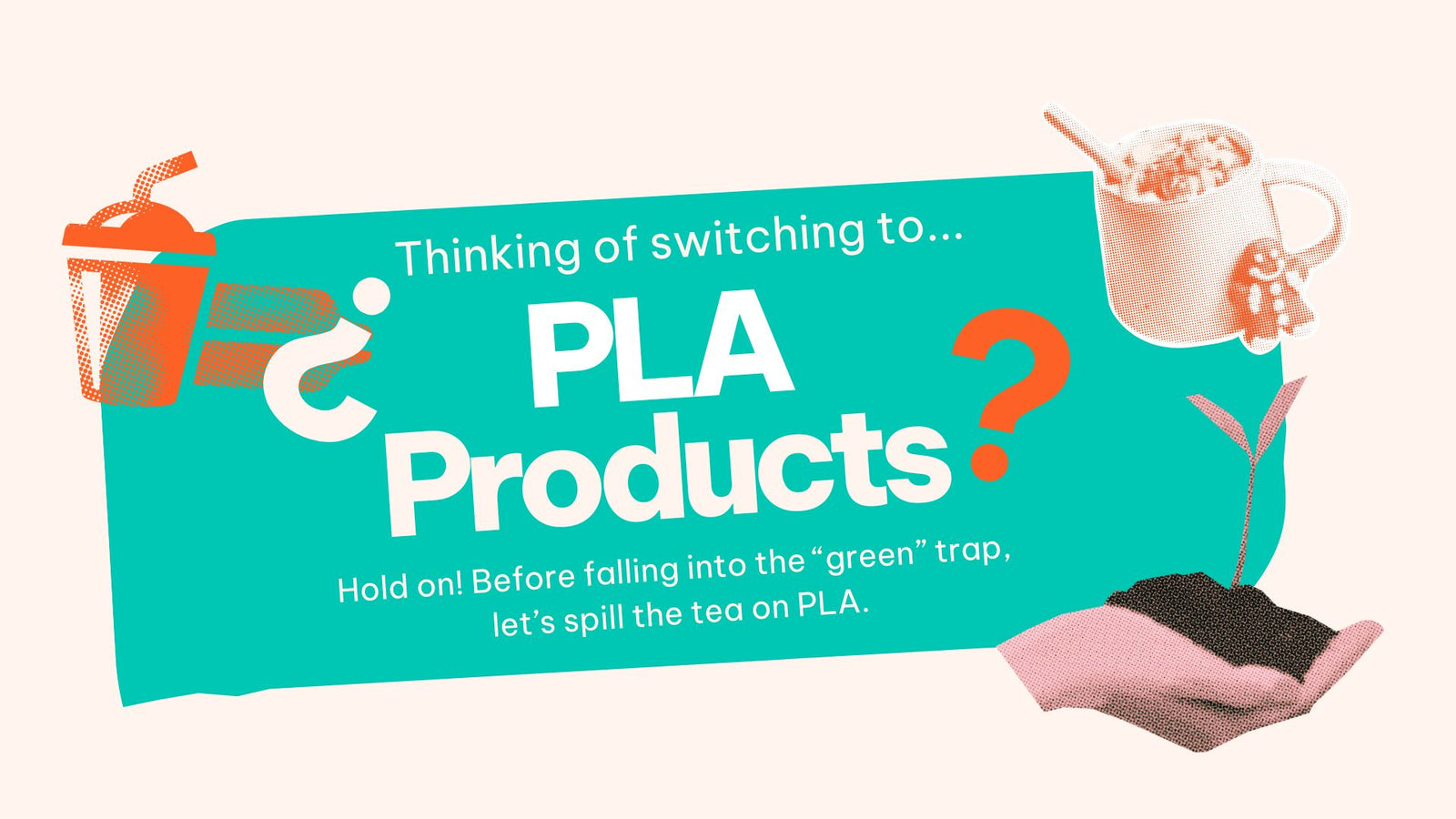Khi ý thức về các vấn đề môi trường ngày càng tăng, nhu cầu về các sản phẩm thay thế bền vững cho nhựa dùng một lần cũng tăng theo. Trong số các sản phẩm này, ống hút PLA (polylactic acid) đã nổi lên như một lựa chọn phổ biến, được quảng cáo là phân hủy sinh học và có thể phân hủy. Nhưng liệu sự phổ biến này có thực sự xứng đáng? Hãy cùng tìm hiểu sự thật đằng sau ống hút PLA, so sánh chúng với xu hướng ống hút giấy, và giới thiệu các giải pháp thay thế cho những ai đang tìm kiếm những lựa chọn bền vững thực sự.
Ống Hút PLA Là Gì?
Ống hút PLA được làm từ axit polylactic, một loại nhựa sinh học có nguồn gốc từ các tài nguyên tái tạo như tinh bột ngô hoặc mía. Những ống hút này thường được gắn nhãn "phân hủy sinh học" và "có thể phân hủy", điều này hấp dẫn những người tiêu dùng có ý thức về môi trường. Tuy nhiên, các điều kiện cụ thể cần thiết để PLA phân hủy hoàn toàn không phải lúc nào cũng có sẵn.

Hạn Chế Của Ống Hút PLA: Chỉ Phân Hủy Được Trong Cơ Sở Công Nghiệp
Mặc dù ống hút PLA về mặt lý thuyết có thể phân hủy, nhưng chúng cần các cơ sở công nghiệp để làm điều này. Những cơ sở này cung cấp nhiệt độ cao, độ ẩm được kiểm soát và các điều kiện vi sinh vật cụ thể cần thiết để PLA phân hủy. Thật không may, các cơ sở này rất hạn chế trên toàn cầu, có nghĩa là ống hút PLA thường bị đưa vào các bãi rác thông thường và không phân hủy như mong đợi. Điều này làm giảm đi những lợi ích mà ống hút PLA được cho là mang lại cho môi trường.
Vấn Đề Vi Nhựa: Nhựa Sinh Học Vẫn Là Nhựa
Một điểm quan trọng khác cần xem xét là mặc dù PLA là nhựa sinh học, nhưng nó vẫn có nhiều điểm tương đồng với nhựa truyền thống. Thành phần của ống hút PLA bao gồm nhựa sinh học và các chất phụ gia khác, có thể phân tách thành vi nhựa khi phân hủy.
Vi nhựa là một vấn đề môi trường lớn, góp phần gây ô nhiễm và có khả năng xâm nhập vào chuỗi thức ăn, với những tác động dài hạn chưa được biết đến đối với sức khỏe con người.

Ống Hút PLA Và Ống Hút Giấy: Cùng Một Xu Hướng
Sự trỗi dậy của ống hút PLA gợi nhớ đến xu hướng ống hút giấy trước đây, khi chúng trở nên phổ biến như một giải pháp thay thế thân thiện với môi trường. Tuy nhiên, ống hút giấy thường không đáp ứng được kỳ vọng do độ bền kém và khả năng tái chế hạn chế.
Tương tự, ống hút PLA hiện đang tràn ngập thị trường, thu hút các doanh nghiệp nhờ giá thành thấp và nhãn "có thể phân hủy", dù chúng có nhiều hạn chế. Mô hình chấp nhận các giải pháp "nửa vời" này thường làm lu mờ những lựa chọn thực sự bền vững.
Tác Động Thị Trường: Ống Hút PLA Và Các Lựa Chọn Thực Sự Phân Hủy
Giá thành thấp và với chiếc nhãn "có thể phân hủy" của ống hút PLA đã giúp chúng trở thành lựa chọn được nhiều doanh nghiệp tìm đến, đặc biệt khi là các doanh nghiệp muốn giảm chi phí và đồng thời trông có vẻ thân thiện với môi trường.
Tuy nhiên, điều này đã làm lu mờ những lựa chọn khác thực sự có khả năng phân hủy. Ví dụ, ống hút làm từ các nguyên liệu có nguồn gốc thực vật như cỏ, nước dừa, gạo, bã cà phê, và sợi mía phân hủy tự nhiên trong môi trường trong vòng một năm, không để lại dư lượng độc hại.
Ống Hút EQUO: Lựa Chọn Bền Vững Thực Sự
Một lựa chọn thay thế đáng để cân nhất đên là dòng ống hút có nguồn gốc từ thực vật của EQUO, được thiết kế để phân hủy tự nhiên mà không cần cơ sở công nghiệp. Được làm từ các nguồn tài nguyên tái tạo như sợi bã mía, bã cà phê và nước dừa, những ống hút này phân hủy hoàn toàn trong vòng một năm, góp phần vào một tương lai bền vững hơn.
Bằng cách lựa chọn các loại ống hút thực sự có thể phân hủy, các doanh nghiệp có thể phù hợp với các mục tiêu bền vững của mình và cung cấp các sản phẩm phản ánh cam kết sâu sắc hơn đối với trách nhiệm bảo vệ môi trường.







